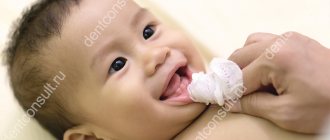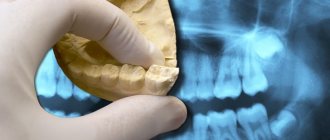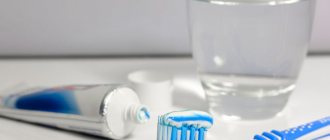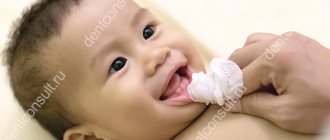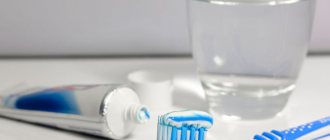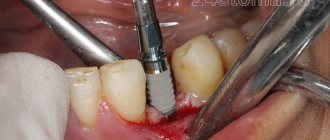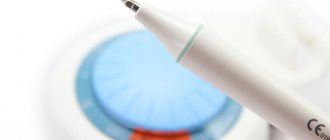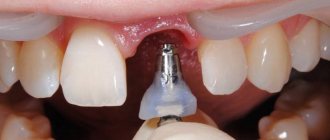For a child, going to the dentist can be a real ordeal. It’s good that in the hands of an experienced specialist, the baby is able to relax and forget about pain. Adult and pediatric dentistry differ in many ways. For example, a doctor “for the little ones” is familiar with the peculiarities of teething, the differences between milk and permanent teeth, and other anatomical aspects of a young patient.
Photo: pixabay.com
In the ranking of the twelve best children's dentistry in Moscow, there was a place for both family and highly specialized clinics. This means that in some cases it is available to children and their parents, while in others it is only available to minors. This is worth paying attention to when planning your visit.
All institutions presented on the list can boast:
- Friendly atmosphere.
- Cozy interior.
- A team of professional doctors.
- Thorough disinfection of instruments.
- Wide range of services offered.
The main goal of this format is to level out stressful emotions, avoid pain during the manipulation process, and encourage the child to continue visiting doctors. According to the above characteristics, the Medsi private clinic deserved the palm. Having gained sufficient experience working with a wide variety of children, they are able to find an approach to even the most capricious and difficult patient.
We present the rating of children's dentistry in Moscow 2022. The best 12 institutions that were selected by our experts based on user reviews and ratings.
Rating:
- Medsi (in Blagoveshchensky lane)
- Dental Fantasy
- Baby Dent
- Jagged
- RuDenta Kids
- Baby and Carlson
- Mi Pol
- Martinka
- Preamble
- Nibbler
- Nutcracker
- CrocoDent
Morozov dentistry for the whole family
Dentistry today is developing as an organ-preserving field of medicine. Therefore, teeth are removed only as a last resort - when conservative treatment methods are ineffective or the suffering tooth can cause serious complications for other teeth.
In addition, patients are referred to the surgeon by another specialist for tooth extraction for certain indications.
For example, impacted teeth, i.e. unerupted, located in the jaw bone, or dystopic, occupying an incorrect position in the dentition - at an angle or outside the dentition. Most often, these teeth are the so-called “wisdom teeth”, or “eight teeth”. Theoretically, if everything is in order with the rest of the teeth, then a person does not need “eights”; they almost do not take part in chewing food. If eruption is accompanied by a complication, then they have to be removed.
The removal operation of any complexity is carried out painlessly, and upon completion, if necessary, bone-forming material is placed in the resulting hole. After tooth extraction, the doctor will recommend the necessary (home) procedures and medications that will make healing quick and painless.
Plastic surgery of the frenulum of the upper lip and tongue. If, due to the anatomical features of the oral cavity, the patient has a short frenulum of the upper lip, this leads to the development of a diastema - a gap between the front teeth. A short frenulum of the tongue provokes the development of malocclusion and speech defects. Since short frenulums also cause exposure of the roots of the front teeth and the development of periodontitis, they are recommended to be operated on. Plastic surgery performed with a laser is less traumatic than a conventional surgical procedure.
Plastic surgery of the oral mucosa is required if the patient has a shallow vestibule of the oral cavity (the distance from the edge of the gum of the front teeth to the mobile mucous membrane). It is necessary to achieve a better aesthetic result with fixed prosthetics or to ensure high-quality fixation of a removable denture.
Plastic surgery of scar cords is also performed to achieve high-quality prosthetic results. Scar cords are tension in the mucous membrane that occurs after complex tooth extractions, severe injuries to the mucosa, and fractures of the alveolar processes. They interfere with the physiological installation of prostheses.
Removal of exostoses (bone growths) formed due to the individual characteristics of the body or after tooth extraction. Their removal is required if they interfere with prosthetics.
Resection of the root apex (cystectomy) is performed if a cyst or granuloma has formed at the apex of the roots of the teeth. In this case, the mucous membrane in the root area is dissected, the cavity of the cyst is opened and it, along with the membrane and its contents, is removed. At the same time, the apex of the root, which entered the cyst cavity, is removed. Then bone-forming material is placed in this place and sutures are applied.
Hemisection is the partial removal of a multi-rooted tooth when a cyst or granuloma forms on one of the roots. During this operation, the crown of the tooth is divided in two - the affected part, along with the root and tumor, is removed, and the remaining healthy part becomes a support for the prosthesis (usually a permanent one).
Our tasks include high-quality preparation of bone tissue for implantation. To achieve this, high-tech osteoplastic operations are performed to build up thinned or missing bone tissue for implant-based prosthetics. That is, bone blocks taken from the donor site are either transplanted onto the area of the alveolar process (the base of the jaw), or membranoplasty is performed - osteoplastic (bone-forming) material is placed on the area where it is necessary to restore the volume of bone tissue. It is covered with a special membrane so that it does not dissolve. After 3-4 months, the bone is restored and implantation can begin.
Adaptation technique
- For the first time, choose the morning hours to visit the clinic. This will allow him not to worry all day and be cheerful. You also do not need to arrive in advance, no earlier than 10 minutes before your appointment.
- The child must be fed.
- On the first visit, the doctor introduces the child to the office, motivates him in a playful way and teaches him how to brush his teeth. Can be professionally cleaned if child is ready. The adaptation technique is aimed more at relieving tension in the face of the unknown and establishing trusting contact.
Always be a positive example for your child.
Take care of your teeth daily. Make brushing your teeth a family ritual before bed and in the morning after breakfast.
Only positive emotions
It is better to plan a visit to the doctor with a parent who is positive about dental treatment and can pass this on to their child.
Discuss in advance
A few days before the appointment, warn your child about the visit to the dentist and answer his questions. Without unnecessary details, tell them that you are going to count the teeth, clean them and solve problems. Try not to make an event out of this, but go to the doctor casually, on the way to another, more significant place for the child - a children's room, an amusement park, a sports center.
Show themed cartoons
On our website you will find many cartoons about the first visit to the dentist, dental care, and funny characters.
Play role-playing games
Let your child take on the role of a doctor and count your teeth. Show an example of correct behavior. Switch roles. Praise your child for good behavior and beautiful teeth.
Pre-introduce
Take your child with you for at least a few minutes to see your favorite doctor. This will significantly reduce the tension from the unknown and make the next visit more comfortable.
Focus on the Positive
Reassure your child that the dentist can fix any dental problems. Use encouraging phrases: “we are going to the magic fairy to count teeth”, “seal up holes”, “heroically fight monsters”….
Forget prohibited phrases
Words such as “don’t be afraid”, “it won’t hurt”, “they’ll give you an injection”, “we’re going to the doctor”, “if you don’t brush your teeth, I’ll take you to the dentist” - have the opposite effect and set the child up for increased stress at the reception.
Positive reinforcement
A job well done deserves a reward. Let the child get his portion of ice cream or a long-desired trip to the zoo. While you rejoice at your success in your heart, when talking with your child, refrain from phrases like: “What a hero you are! You were so brave! I am proud of you!" A visit to the dentist should be considered as an ordinary and necessary occurrence in everyday life and should not involve overcoming a terrible situation.
Consistency is the key to good relationships
Whether your first visit was completely successful or unexpectedly unpleasant, the key to a lifelong love of your dentist lies in consistency. Just like adults, children need to have their teeth checked and cleaned by a doctor at least twice a year.
Secrets of a good dentist's success
A pediatric dentist always faces two main tasks: gaining the child’s trust and safely providing care. A qualified dentist must have the skills and experience to properly manipulate a child. His goal is not to intimidate the little patient, but to inspire complete trust in him.
Even if the child opened his mouth and allowed the doctor to begin treatment, risks are not excluded. Most young children are not able to sit in one place for a long time, and even more so if even a slight discomfort or pain occurs. To avoid injuries and provide quality treatment, the doctor must perform all actions in detail, but at the same time quickly. The average duration of one dose in young children is no more than 10 minutes.
In modern dentistry, dental treatment for children involves almost the same wide range of services as for adults. The peculiarity of pediatric dental care lies mainly in the correct approach to small patients. Your first dental experience can have a profound impact on your trust in dentists throughout your life.
Features of dental treatment in children
Modern pediatric dentistry is a separate area that takes into account not only anatomical, but also psychological factors of the child’s body. The treatment methods used today require the most gentle treatment, the creation of extremely comfortable conditions and an individual approach.
Dental treatment at a pediatric dentist is painless. Even minor manipulations are performed using local application anesthesia. For more serious procedures such as canal cleaning, pulp removal, tooth extraction, etc., injection anesthesia is performed. When using painkillers for the first time, the dentist must give the child an allergen test.
Complex and lengthy dental treatment in children can be performed under sedation. This is a new method of anesthesia that allows you to put the child into a state of shallow sleep to eliminate psychological stress. Sedation is performed in conjunction with local anesthesia.
